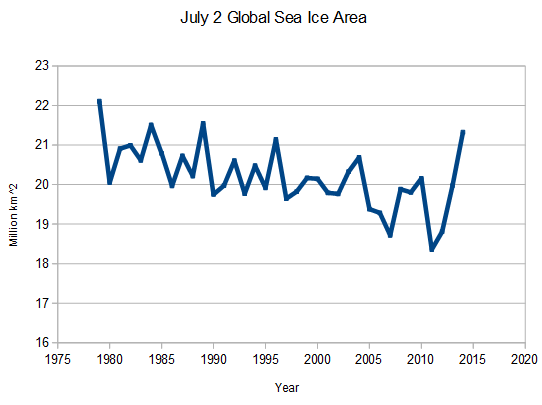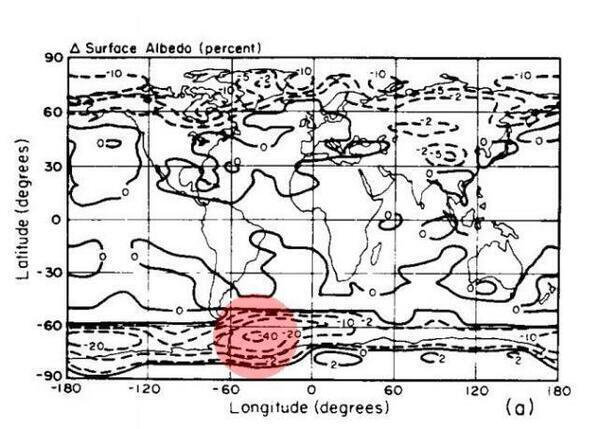The area of sea ice on Earth on July 2 was the largest since 1989, and the fourth largest on record.
arctic.atmos.uiuc.edu/cryosphere/timeseries.global.anom.1979-2008
In 1984, NASA’s James Hansen predicted peak sea ice loss in the Weddell Sea of Antarctica, right where Antarctica has experienced peak sea ice gain.
http://www.epa.gov/climatechange/effects/downloads/Challenge_chapter2.pdf





seen this?
http://www.dailymail.co.uk/sciencetech/article-2680519/Global-warming-creating-MORE-glaciers-Antarctic-sea-ice-reaches-record-high-climate-change-scientists-claim.html
LOL!
Serreze forgets sea ice is expanding and getting thicker all around the continent, not just the bit of West Antarctic where the ice shelves are.
Back to the drawing board methinks!
http://notalotofpeopleknowthat.wordpress.com/2014/07/05/more-junk-science-from-mark-serreze/
Totally, this guy doesn’t know to add 2+2, colder continent + colder oceans in the Antarctic basin = more ice (the same is starting to happen in the Arctic too).
Even warmist biased studies confirm that Antarctic continent is cooling (but of course, they *don’t say* that it’s because of the Sun),
”The ozone hole also affects the Southern Hemisphere’s surface climate. As the Sun returns to Antarctica [in the spring], ozone should be present, absorbing radiation and thereby warming the polar vortex. There is less heating because of ozone depletion, Antarctic lower-stratospheric temperatures are below their pre-ozone-hole average during spring and summer, and the [cold] polar vortex persists one to two weeks longer. Because the circumpolar flow around Antarctica extends to the surface, the tropospheric jet is strengthened during the southern summer, which increases the surface wind stress and thereby modifies the ocean circulation. Increased greenhouse gas levels lead to surface warming in the Arctic and might be expected to have the same effect in the Antarctic. However, observations and models show that the ozone depletion has caused the interior of Antarctica to cool. The wind and temperature changes driven by ozone depletion also change Southern Hemisphere precipitation patterns.”
http://scitation.aip.org/content/aip/magazine/physicstoday/article/67/7/10.1063/PT.3.2449?dm_i=1Y69,2LFVV,E4CSKB,9H5SN,1
These people are hopeless, they’ll continue their babbling forever, after all they are not humble enough to contradict their own previous analyses, even when the facts prove them wrong.
They sound completely delusional. One expects to hear any minute:
“Es bleiben im Raum: Keitel, Jodl, Krebs und Burgdorf.”
Massive tampering in Ohio
http://notalotofpeopleknowthat.wordpress.com/2014/07/05/temperature-adjustments-in-ohio/
Cue the “more sea ice area equals LESS sea ice VOLUME” commenters.
In the minds of the warmists only, not in the Antarctic continent.
CO2 is forcing the North Pole into negative warming again:
http://ocean.dmi.dk/arctic/plots/meanTarchive/meanT_2014.png
No worries though, it’s a warm cold.
Anyone can prove *anything* by assuming as correct an absurd (logically contradictory) hypothesis. Politicians (and warmists) use this all the time.
Still below the green curve, which is a good sign.
2014 following 2013 very closely, another good sign.
beep beep boop
Thank god for global warming. Can you imagine how cold it would be otherwise??